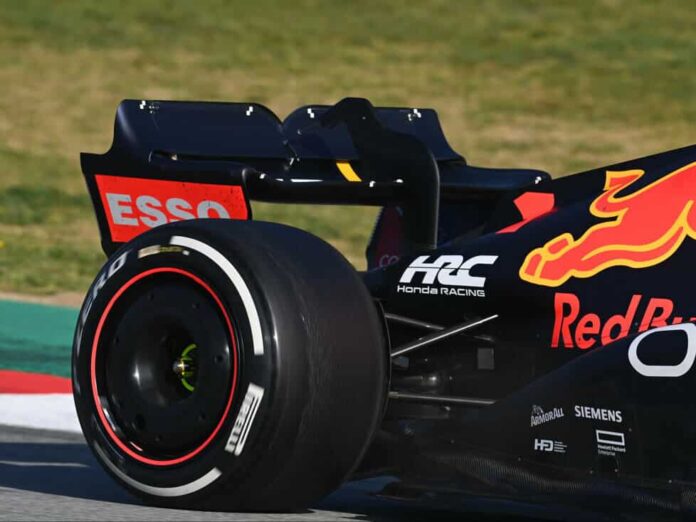After major DRS problems on Max Verstappen’s RB18 at the race weekend in Spain, Red Bull believe they have found the solution – Baku as a real benchmark
Red Bull’s Formula One chief engineer Paul Monaghan is confident his team has fixed the recurring DRS issues, while stressing that the high speed at which the DRS will be opened in Baku will be the ultimate test
World champion Max Verstappen was forced to abort his final flying lap in qualifying at the Spanish Grand Prix, leaving pole position to Charles Leclerc, as his DRS locked up on the start and finish straight. The Dutchman initially even suspected engine failure due to the lack of top speed.
Red Bull initially thought they had found a quick fix between qualifying and the race, but the problem reappeared on Sunday and prevented the Dutchman from overtaking Mercedes driver George Russell on the track after his driving error.
Red Bull: “DRS problem was self-inflicted “
Thanks to a sophisticated Red Bull strategy and the engine failure of Leclerc’s Ferrari, which had been in the lead until then, Verstappen was still able to take victory at the Spanish Grand Prix. However, this did not change the fact that Red Bull had to get to grips with the DRS problem.
Before the Monaco Grand Prix, the Red Bull engineers set to work to fix the problem once and for all. According to chief engineer Monaghan, the team has now learned its “painful lessons” and put a permanent solution in place.
“Our DRS problem was self-inflicted, if we’re honest,” says Monaghan, who also suggests Red Bull may have cut too many corners in trying to slim the overweight RB18 down to minimum weight.
“There is a sigh of relief after the work that some very clever people have done in terms of root cause analysis as well as controls. They have done a phenomenal job in a very short time. It’s a challenge that changes from track to track, given the speed at which the DRS opens and the track conditions. “
DRS is opened at 300 km/h in Baku
“I’m confident and also much happier with what we learned in Spain,” said Monaghan. In Monaco, Red Bull could not see any DRS problems, but in the Principality this is opened at very low speeds after the tight final corner, which means there is less drag on the rear wing before it opens.
The upcoming race in Baku, with top speeds of around 340 km/h on the 2.2-kilometre start and finish straight, already presents a completely different challenge. Also, at the DRS activation point, the drivers are already doing about 300 km/h, which means that the air exerts a lot of force on the rear wing.
As a result, Monaghan admits that this weekend’s Azerbaijan Grand Prix will be the final test of whether Red Bull’s confidence is justified. “Baku presents us with different problems,” he says.
“The opening speed in Monaco was about 160 km/h, but in Baku it’s 300 km/h. So it’s not really about the weight of the wing, it’s about whether it has enough power to open with that aerodynamic load,” the Red Bull chief engineer explains.
“I think it would be stupid to rest on our laurels. We know what we did wrong. It was our job to fix it and so far everything is fine. “







